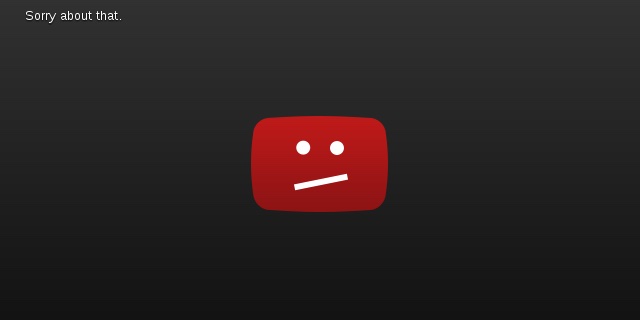Want better payouts from YouTube? Then stop accepting lower payouts from YouTube. It’s really that simple.
The music industry is often accused of promoting ‘brain drain,’ constant infighting, offering wild overcompensation for underwhelming results, suing instead of solving business problems, and routinely getting out-strategized by smarter big tech interests. But beyond these enormous handicaps, the industry is also amazingly great at complaining while taking little-to-no action.
That, more than anything, is why YouTube can so easily take advantage of the music industry, and ignore the noise floor of nagging industry executives and artists. Because they’re not gonna do anything about it as long as the music industry doesn’t do anything about it.
Accordingly, YouTube is now rubbing the music industry’s face in it, and twisting the arguments in their favor. Just last week, the company’s Head of YouTube International Music Partnerships Christophe Muller snubbed at claims that music represents an important part of the company’s business. Quite the contrary: according to Muller, the average YouTube viewer spends less than one hour per month watching music-related content, which boils down to about 2.5 percent of overall traffic. “The final claim that the industry makes is that music is core to YouTube’s popularity,” Muller stated.
“Despite the billions of views music generates, the average YouTube user spends just one hour watching music on YouTube a month. Compare that to the 55 hours a month the average Spotify subscriber consumes.”
Enter superstar artist manager Irving Azoff, recently billed by Billboard as the most powerful person in the music industry. In a response post on Re/Code, Azoff blasted YouTube for hiding behind the DMCA, and using antiquated copyright laws to unfairly strong-arm the labels and artists. “But artists can’t opt out of YouTube. Because of the outdated Digital Millennium Copyright Act, the only way for an artist to keep a song off YouTube is for that artist to send YouTube a notice every time that song is uploaded by a different user,” Azoff noted. “It is impossible.”
But unlike Google search results, which are riddled with links to piracy sources and can’t be removed (thanks to the same DMCA), YouTube actually has a mechanism for taking stuff down and keeping it off. If Prince could do it, so can any artist. The question is whether the music industry wants to do that, and actually force the changes they keep demanding.
Because in all actuality, it’s pretty easy to call YouTube’s bluff and bring this entire platform to its knees. In fact, it can be accomplished in 4 easy steps:
Step 1: Stop Talking About It. Stop Blogging About It.
It’s not just Azoff. At Canadian Music Week in Toronto last week, discussions constantly turned to how exploitative and evil this platform is for artists. There were statements being issued, executives making proclamations, demands being made, and warlike interviews being published.
The only problem is that YouTube isn’t paying much attention: they weren’t even at the conference (from what I could tell), despite this being one of the largest music industry events worldwide (don’t let the ‘Canadian’ fool you). And overall, there’s been little evidence that this is a two-sided debate.
Why is that? Because YouTube thinks the music industry is bluffing. They simply don’t believe that artists and labels really want to forego the billions of views that their platform offers. And if they’re not forced to make changes, they won’t.
Step 2: Start Removing Content Using ContentID.
The only way to really force change in a situation like this is to actually start removing content. Remember: when Prince was alive, it was nearly impossible to access his videos on YouTube. And the reason was that Prince and his enforcement team were pulling stuff down (and preventing it from appearing for extended periods of time) though ContentID.
Yes, ContentID is a simple mechanism that gives creators control over how they want to handle the use of their content. You can decide to mute your video within a video, monetize it, or pull the video down entirely.
It’s all spelled out on YouTube’s site, right here.
Here’s another statistic: it turns out that the top 5% of artists garner 95% of music-related video views, according to Tubular. So if only the top 100 superstar artists employed ContentID to pull down anything containing their music, as well as the videos they posted, then YouTube would be a dramatically smaller site, overnight.
Remember: the music industry estimates that up to 50% of YouTube’s traffic comes from music. Think about what happens when 95% of that traffic is removed.
Which brings us to our next step…
(3) Move to Another Platform (Like Amazon)
Who else hates YouTube? A lot of really, really big companies, like Amazon. In fact, Amazon just released a video platform that gives far more control to creators; they want to compete! The only problem is that nobody is paying attention (we know, because hardly anyone read the article we wrote about it).
But, what if those top 100 artists shifted to not just Amazon, but Facebook Video and any other mega-video platform that was (a) willing to offer better payouts, and (b) really wants to change a completely lopsided video space?
(4) Renegotiate.
Now, after crippling YouTube while tripling the size of their three biggest competitors, let’s see how the renegotiation process goes. You’ll be amazed at the results.
Any questions?
The post How to Solve the Music Industry’s YouTube Problem (In 4 Easy Steps) appeared first on Digital Music News.
